First, I couldn’t believe I forgot to post one of the shots we did in front of our Grand Teton cabin. I mean, really. Look how happy we all look.
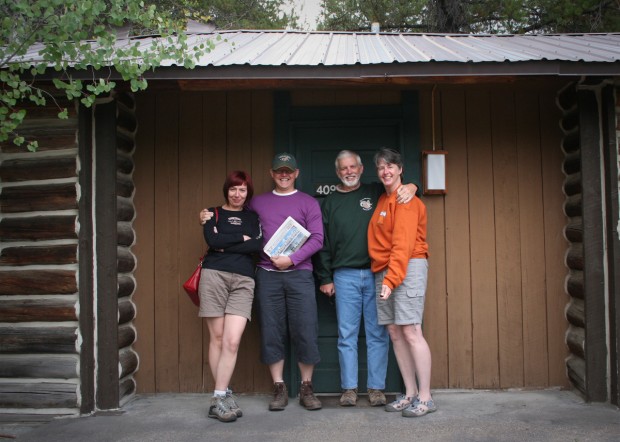
Second, I forgot just how many super-cool geysers and other geothermal stuff we saw that day.
After we left West Thumb on September 14 (the subject of yesterday’s post), we headed to the Upper Geyser Basin. That won’t mean anything to most of you unless I add that Old Faithful is located in the Upper Geyser Basin.
 Everyone’s heard of Old Faithful, right? Even if you’ve never even thought about taking a trip to Yellowstone.
Everyone’s heard of Old Faithful, right? Even if you’ve never even thought about taking a trip to Yellowstone.
Old Faithful is famous not because it’s the biggest geyser, but because it’s the most predictable. Hence the name. It generally erupts every 90 minutes or so. Day and night. All year round.
But Old Faithful is just the tip of the iceberg. The Upper Geyser Basin, which is where Old Faithful is located, has a land area of about two square miles and “contains the largest concentration and nearly one-quarter of all of the geysers in the world.” That quote and all the other educational/informational/boring info about geysers in this post is courtesy of the Upper Geyer Basin page at YellowstoneNationalPark.com (not the official NPS site).
Still, seeing Old Faithful erupt is like the quintessential Yellowstone experience. So we had to go watch.
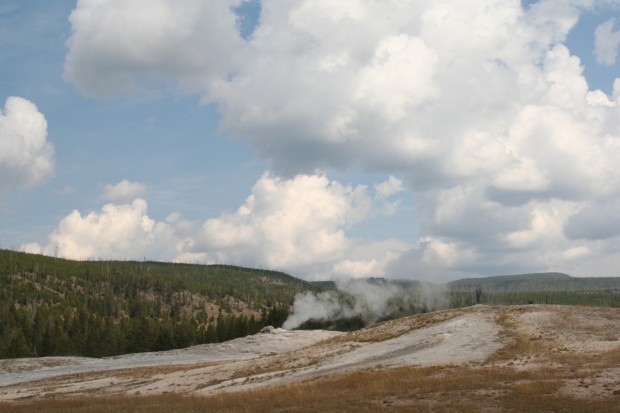
You ever stood by a stove waiting for a pot to boil? That’s about how much fun it is waiting for a geyser to blow. Usually.
That day there was an odd undercurrent of excitement in the air. And it all seemed to be focused on some other stuff nearby.

See that little puff of steam toward the left of the frame? That’s the Giantess.
You know I HAVE to share more than the name, right?
GIANTESS GEYSER, temperature 200.7°F, interval of 0 to 41 eruptions per year, duration 3-43 hours, height 150-200 feet. “Giantess is unpredictable with long dormant periods. When it does erupt, the first hour is generally the most spectacular. An eruption has two phases-a water and steam phase. Water periodically jets to 200 feet high during the first hour and as the water phase subsides steam begins and roars from the 15×20 foot crater, sending a large column of steam into the atmosphere. Giantess’ vent has been probed to a depth of 62 feet below the lip. Subterranean connections exist between other Geyser Hill features and after an eruption, nearby Beehive Geyser may be triggered to erupt.”
So, while seeing Old Faithful was cool and all…
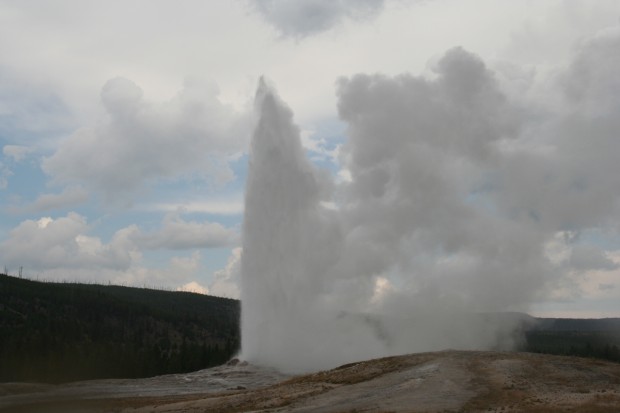
… seeing Giantess erupt would REALLY be something. There was quite a buzz going through the crowd. Seriously. Up to that point, Giantess had only erupted two times in 2011.
Once in early January, shortly after midnight. And once in May.
Then it also erupted on September 14. And we got to watch.
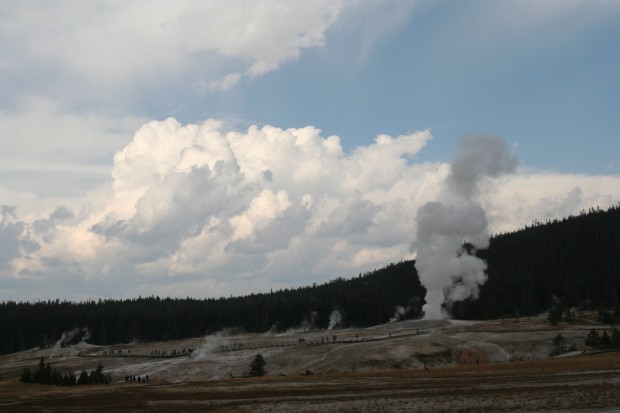
Remember, the last time it had erupted was in May. So we had Old Faithful and Giantess erupting at practically the same time.
And did you read that bit about the neighboring Beehive?
BEEHIVE GEYSER, temperature 199°F, interval of 7 hours to days, duration 4-5 minutes, height 150-200 feet. This geyser is appropriately named after its beehive-shaped cone, which is three and a half feet high and four feet in diameter. “Beehive, considered one of the largest active geysers in the world, erupts to a height of 200 feet. However, since its discovery, it has been unpredictable. It has eruptive intervals of eight to twelve hours, but it has infrequent eruptions as long as 3 to 10 days and dormancy of weeks to months. A small vent located a few feet east of Beehive, called Beehive’s Indicator, erupts 6-10 feet usually 10-20 minutes before an eruption. An eruption begins with occasional splashing, then small surges. These progress into an eruption as the ground rumbles and a narrow, straight fountain of water jets upward.”
Yep, it erupted, too.
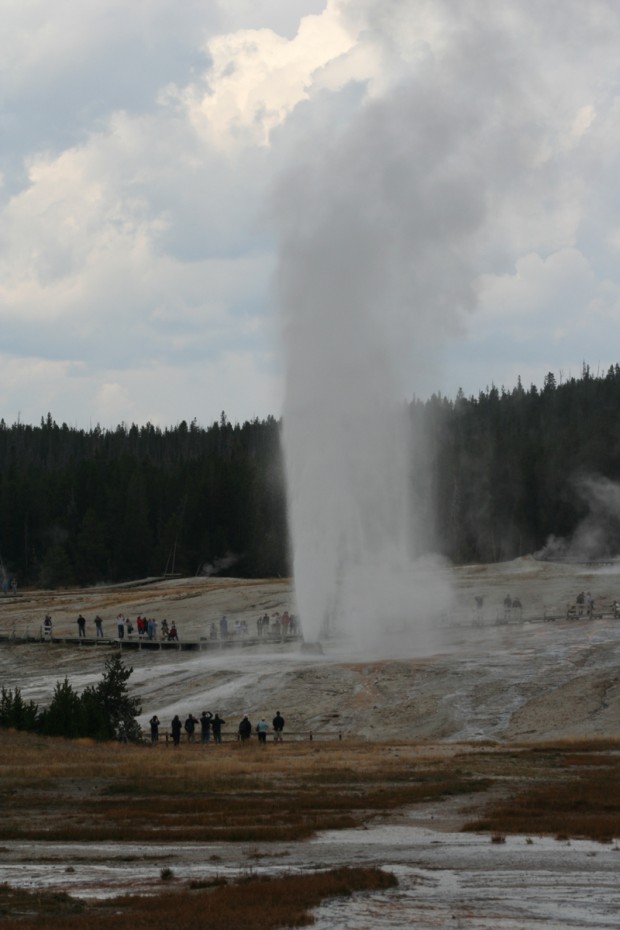
Like Annelies said at the time, there were so many geysers going off, we didn’t know where to look next!
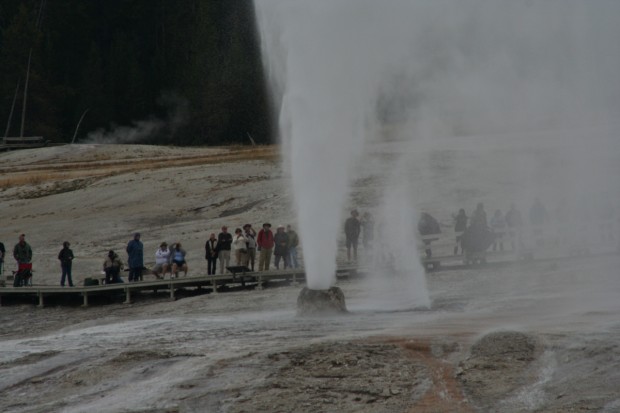
Those folks were a bit too close for comfort if you ask me.
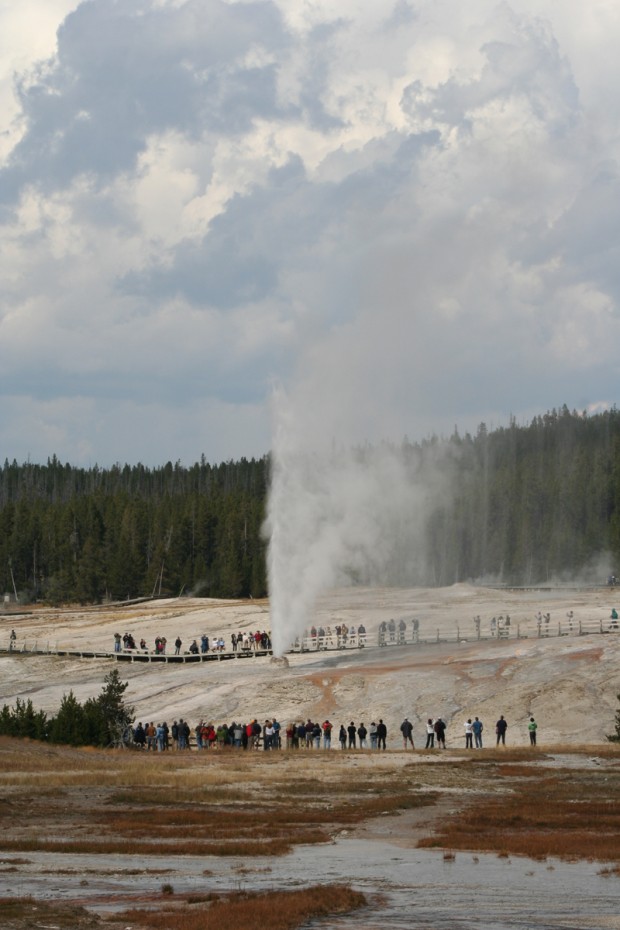
After we took a gazillion pictures, we walked along the pathway that winds in among the geysers and other thermal features in the basin.
It’s amazing to see just how many shapes, sizes, and colors there are.
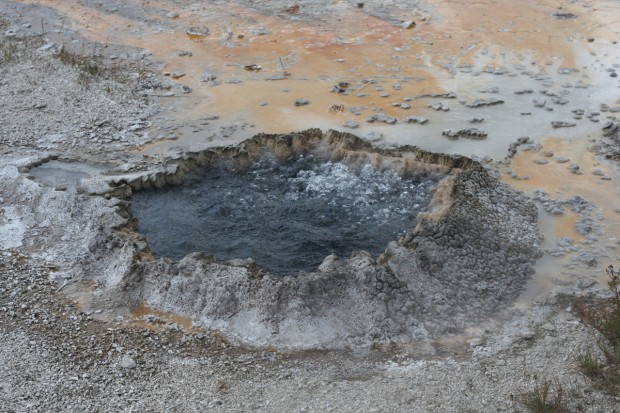
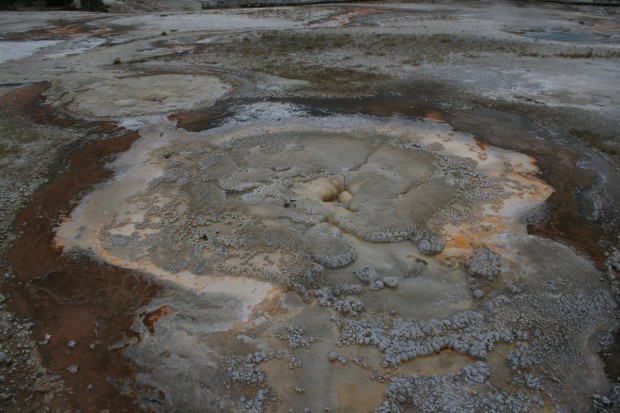
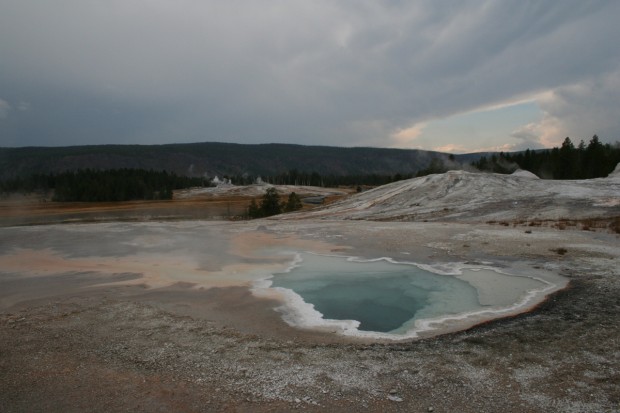
That’s one of my favorite shots. Look how you can see down into the pool. Remember, click on the image and you’ll get a bigger version to peruse. And look at that sky. It had been threatening rain off and on all day.
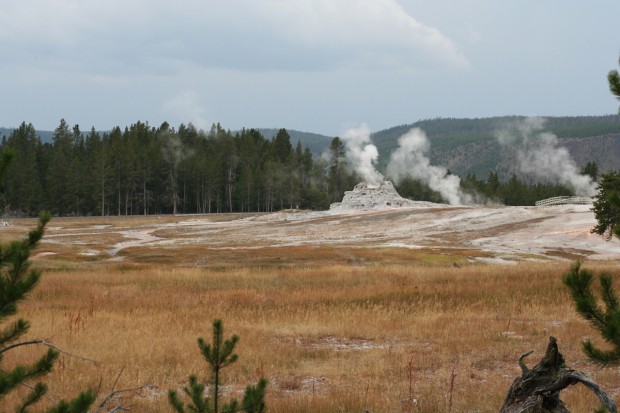
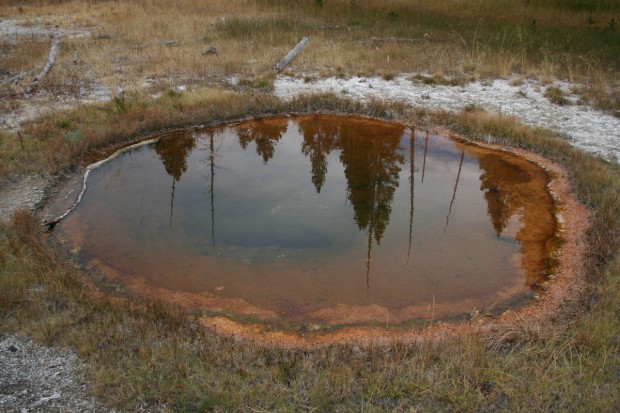
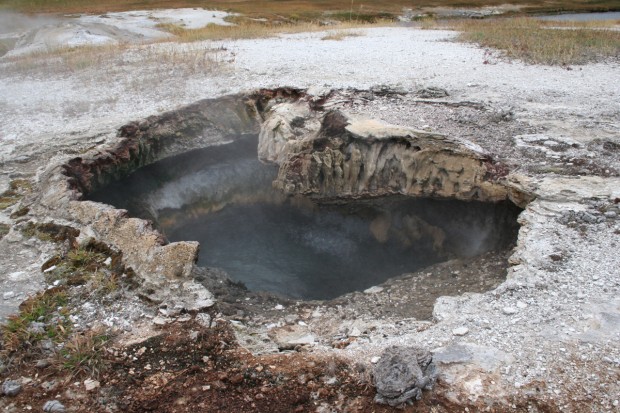
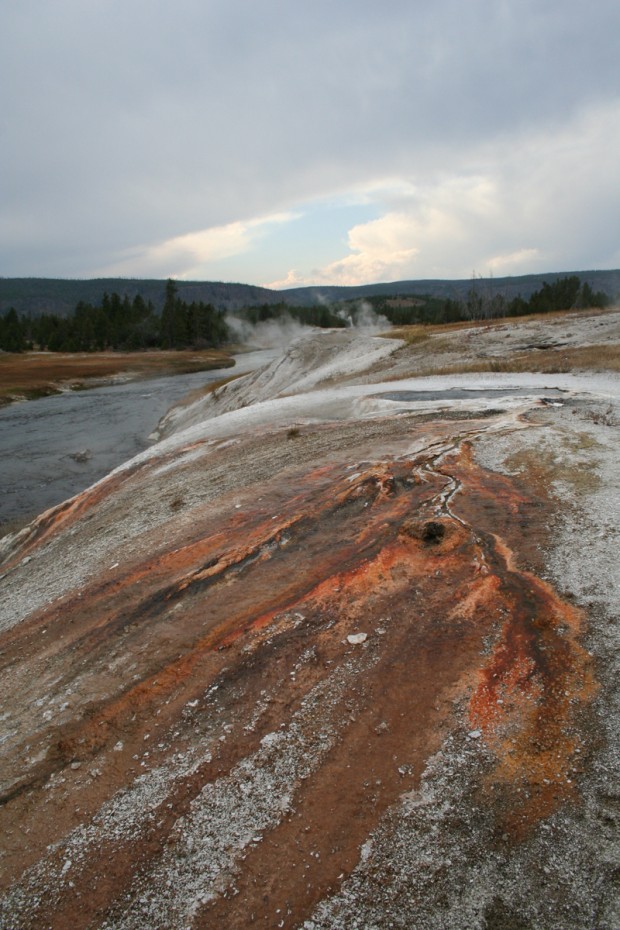
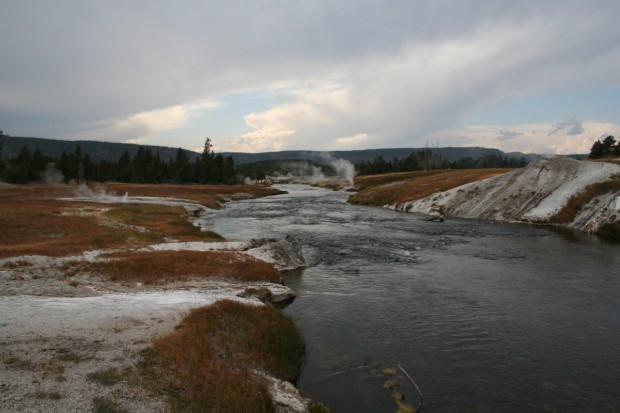
I kept telling everyone the rainy, gray skies were going to make for some dramatic lighting. Other than re-sizing, these are all pretty much SOOC shots.
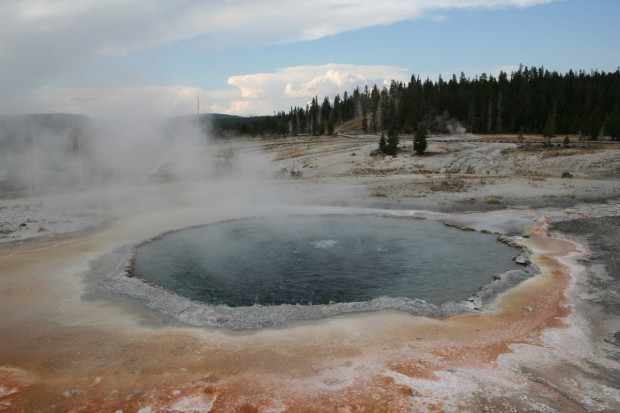
I don’t remember the name of that one either, but it was sure interesting watching it bubble.
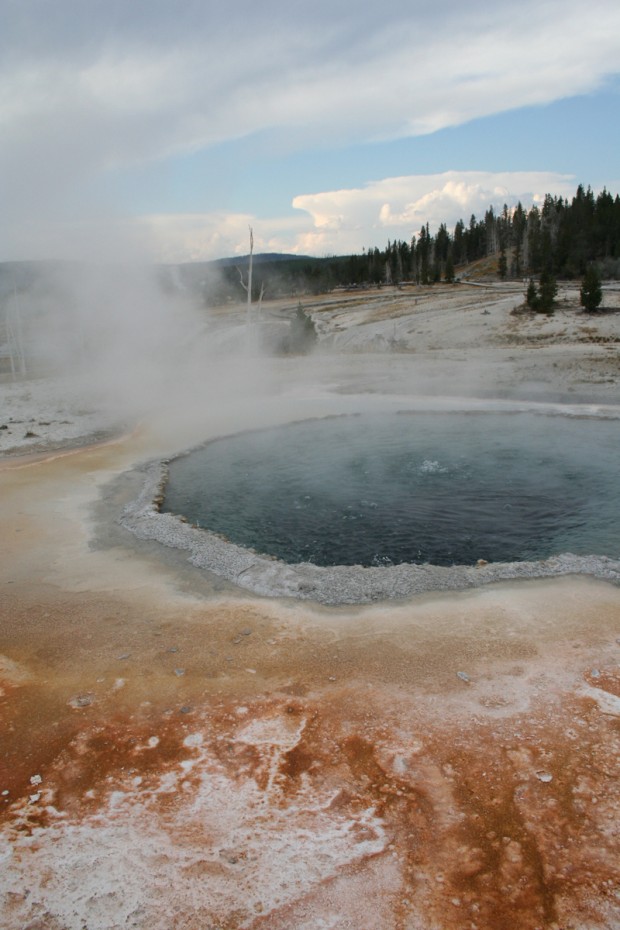
I am so glad we took our time and really looked at all of this stuff closely. It was amazing.
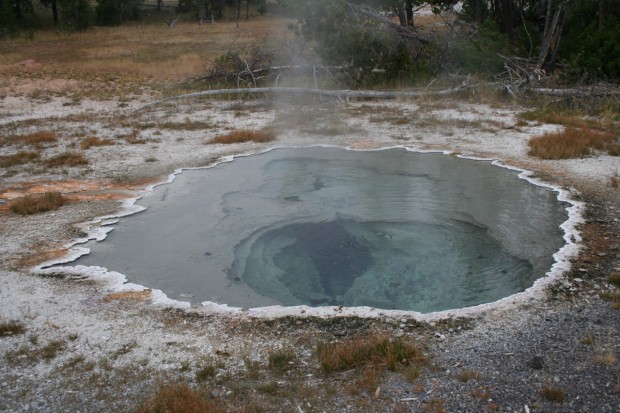
That one isn’t very colorful, but I love the way you can see down into it.
That’s it for Upper Geyser Basin.
But that’s not the end of the geysers for that day. There were more. Next stop… Midway Geyser Basin.
Know what’s there?
The Grand Prismatic Spring. The big daddy of all the pools.
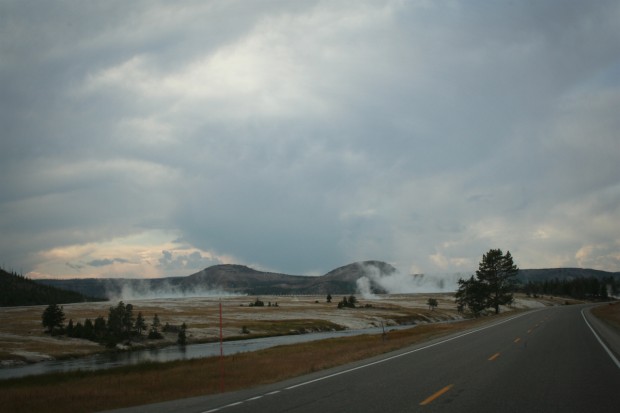
Do you have a favorite shot from this post? Hard to pick, isn’t it? I think I like the river ones the best. But then there’s Hot Spring with the dramatic sky in the background. And the Colorful Pool.
Sigh…
I’m trying to mentally prepare myself for this year’s “favorite shots” post. Last year, it was the top 10 of 2010. I think this year I’ll do my favorite 11. Narrowing them all down is really going to be tough.
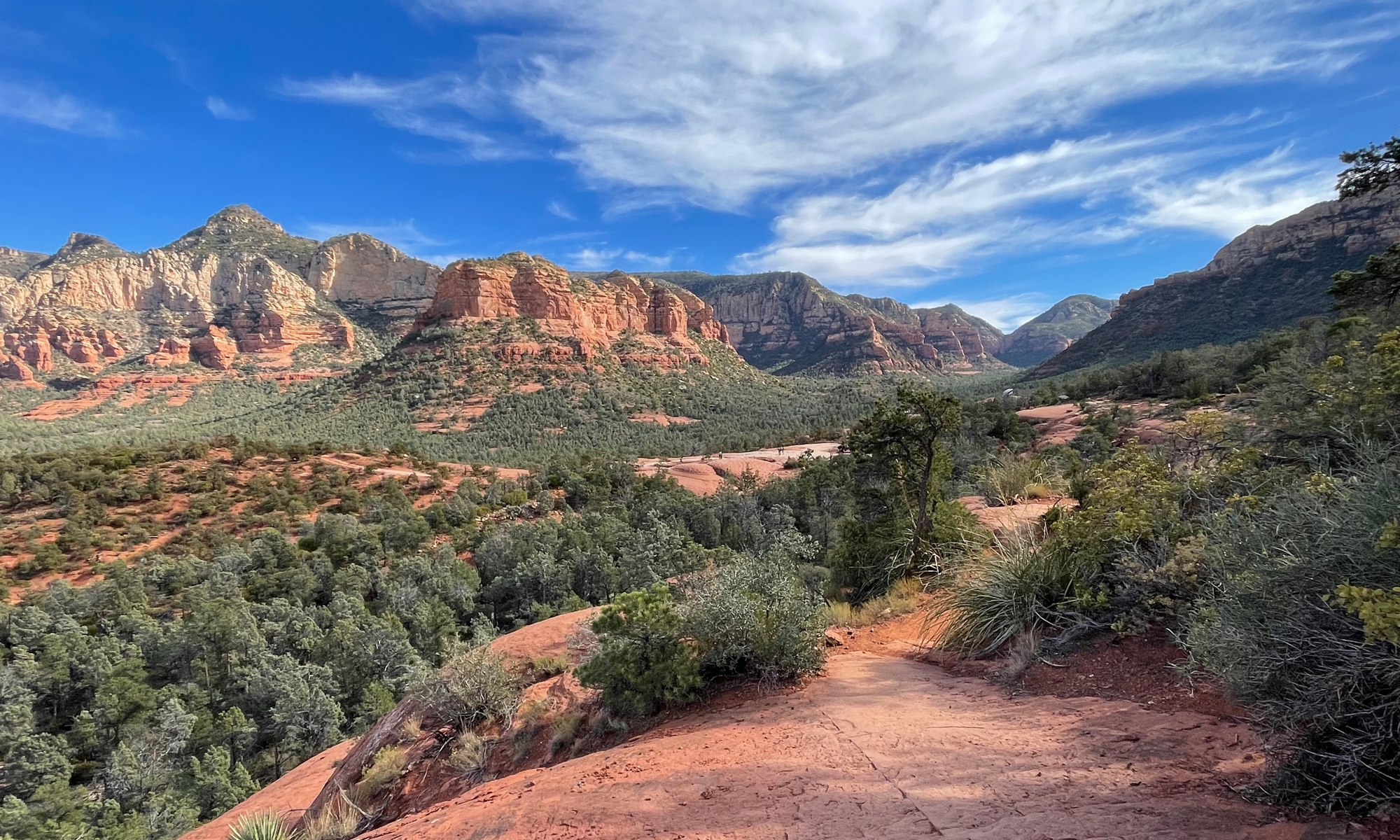
Reliving that day – remember how much fun the guys were having making of us, clicking our cameras like two crazy women? I actually laughed at myself seeing how many pictures I took of Old Faithful geyser, thinking “That’s it, he’s gonna blow now”. And that little kid, saying “Good job, Old Faithful”. Priceless! The river shot is one of my personal favorites.